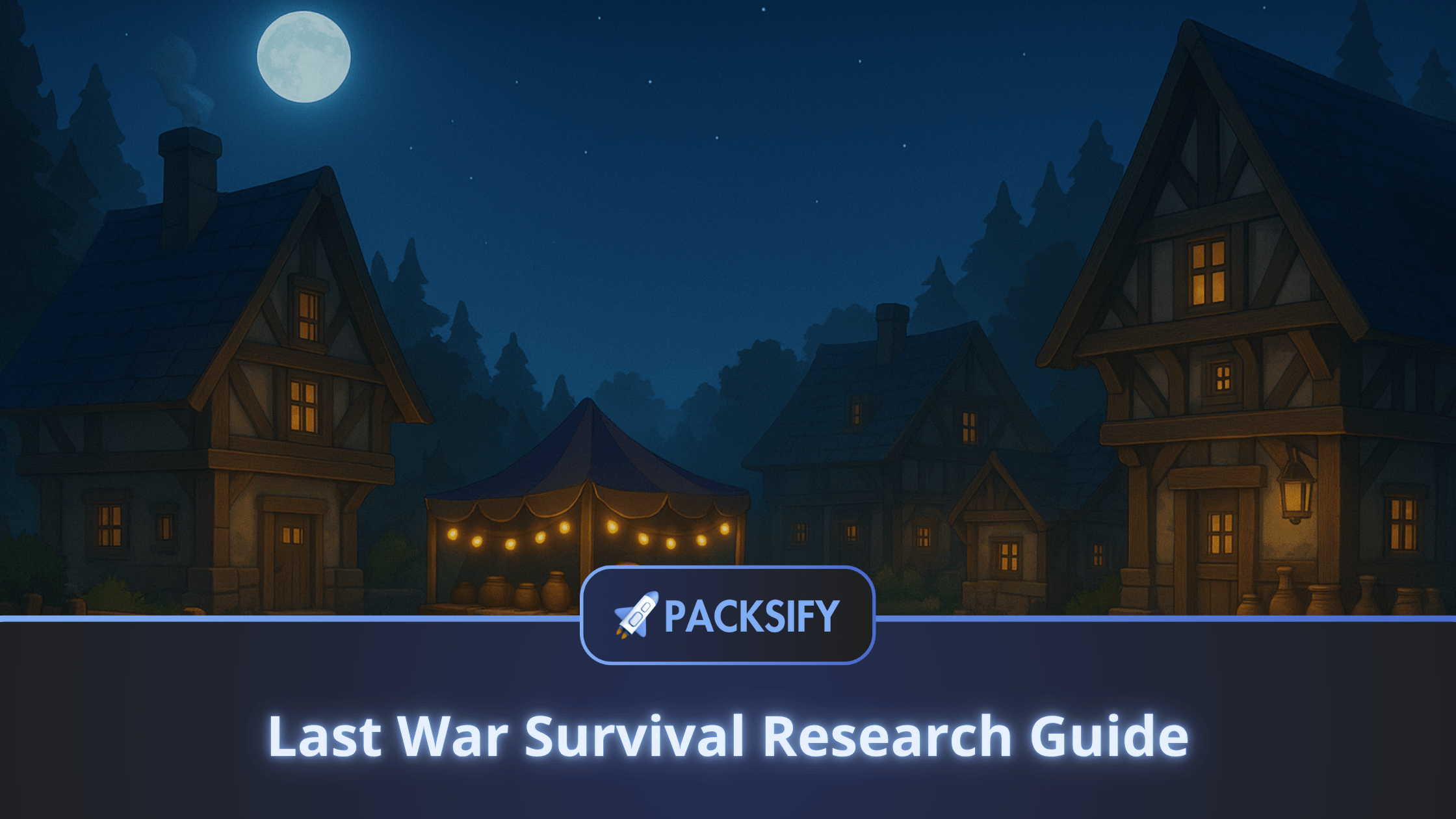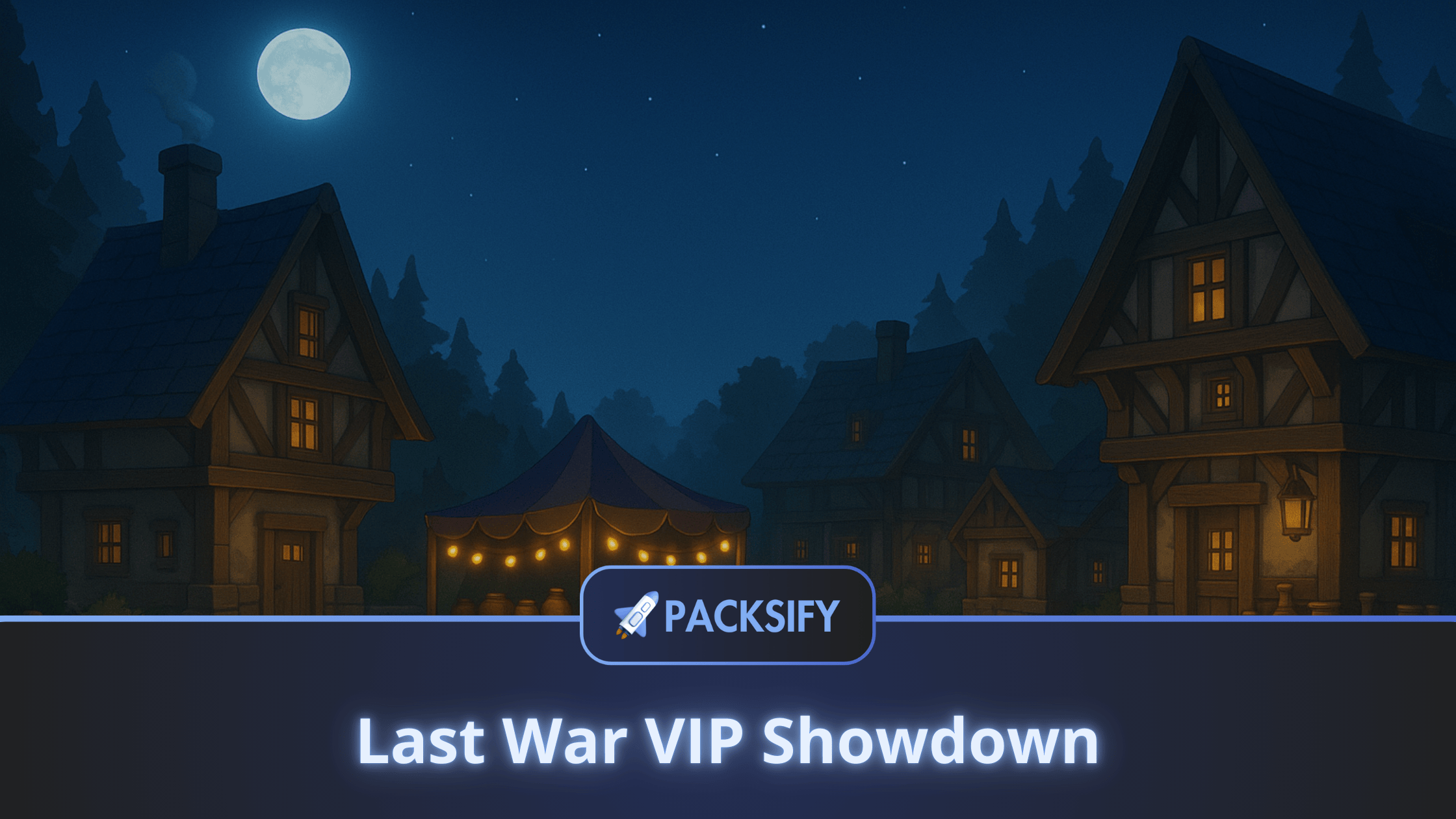Last War Survival Research Guide: What to Prioritize

In Last War: Survival, research isn’t just a background task, it’s one of the core systems that drives your power, speeds up your development, and unlocks key troop and base upgrades.
But here’s what most players get wrong: they treat every tech as equal. Some burn thousands of badges and resources on research that barely moves their progress, while others overlook early nodes that could cut construction timers or double resource income.
Between Development, Economy, Units, and the more advanced Alliance Duel and Special Forces trees, it’s easy to feel lost…
Should you rush combat buffs or focus on economy first? When is it worth opening a new garage? And what’s the right moment to start chasing T10 troops?
This guide breaks down exactly what to research first, which techs to delay, and how to build a long-term plan that works whether you’re F2P or already running two research centers.
Why Research Priorities Matter in Last War
Not all research is built equally. Some trees give huge, immediate value (like faster building, shorter training time, or cheaper upgrades), while others eat up badges for minimal gain.
Top players follow one golden rule: Max your badge-free techs first.
Here’s why that’s so effective:
- They give large boosts early (+10–30 % build and research speed).
- They cost only common resources—no badges.
- They complete quickly, letting you snowball progress early on.
That means you save badges for when they really count: Alliance Duel, Special Forces, and other late-game tech lines that unlock T10 troops and major stat gains.
1. Start Here: Development & Economy
In the early game, your biggest bottleneck isn’t combat power, it’s time and resources. That’s why Development and Economy research should be your first major focus.
Development gives pure speed. Push construction and research speed nodes right away, then prioritize Fast Builder and Research Enhancement.
These cut your build timers permanently, saving you thousands of speed-ups later. Around HQ 20–25, you’ll also unlock an extra barracks, which accelerates troop production.
Economy fuels everything else. Boost your food, metal, and coin production, then rush the extra farmland, mine, and refinery nodes… they’re passive income sources that run 24/7. Once they’re unlocked, circle back and fill out the % bonuses.
Together, these two lines create a strong foundation that keeps your base improving without badge costs. You’ll progress faster, upgrade smoother, and hit the mid-game milestones earlier than most players around you.
2. Understand Garage Research Before You Overspend
The Garage tech tree is one of the most misunderstood parts of Last War research system, and also one of the easiest places to waste resources if you rush it blindly.
Each garage (Garage 1, 2, 3, and 4) powers a separate combat team, and while their research paths look identical, the costs ramp up fast as you move through them.
Here’s the breakdown:
1. Garage 1, your first and cheapest tree. Everyone has this one from the start, and it’s the best value-for-cost investment you’ll ever make.
2. Garage 2, unlocks your second team but is noticeably more expensive. Costs and timers rise because you’re powering two squads instead of one.
3. Garage 3 — the most expensive of all. Most players hold off on this until late-game when their economy can comfortably support it.
4. Garage 4, a special unlock for spenders, but interestingly, its upgrade costs are lower than Garage 2 or 3.
That’s why many mid-to-late game players follow a simple pattern: Max Garage 1 → Build up Garage 4 → Then circle back to Garage 2 and 3 later.
This way, you keep your strongest teams progressing at a manageable cost instead of spreading resources thin across all four trees.
Think of your garages as your formation multipliers. They add depth to your lineup, but they’re only worth pushing when your economy and development tech can sustain the cost.
3. Max the Alliance Duel Tree as Soon as You Unlock It
Once you reach the mid-game, a new research line appears — the Alliance Duel tree. And here’s the truth: nothing accelerates your growth more once it’s open.
Every upgrade inside this tree feeds directly into your weekly Alliance Duels, boosting your points, rewards, and ranking. Two nodes in particular should jump straight to the top of your priority list:
- Advanced Rewards – Unlocks the Tier 2 reward boxes (4-6) for bigger daily loot.
- Super Bonus – Opens Tier 3 boxes (7-9) with top-tier badges, consumables, and speed-ups.
These bonuses are active every single duel week, meaning the sooner you finish them, the sooner you start cashing in rewards repeatedly.
The strategy is simple:
- Time your badge research with Day 3 of Alliance Duel (often called Bednest Day).
- Queue your big nodes right before the event window so they finish during scoring.
- Rinse and repeat each week to double your badge value and climb rankings faster.
If you’re serious about long-term progression, this tree deserves your full attention until it’s maxed. The extra badges, consumables, and event points you’ll generate here will fuel every other branch that follows, especially the costly Special Forces line.
4. Push the Special Forces Tree to Unlock T10 Troops
If the Alliance Duel tree is about rewards, the Special Forces line is about pure power. This is the research path that eventually unlocks your T10 troops, and it’s one of the most expensive yet rewarding investments in the entire game.
Every node here contributes to your combat potential — troop attack, defense, HP, hospital capacity, and recovery speed. But the real goal lies at the very bottom of the tree, where the Unit X research finally unlocks training for T10 units.
Here’s what most players get wrong: you don’t need to max the entire tree to get there. To unlock Unit X, you only need to max these four final nodes:
- Advanced Protection
- HP Boost III
- Attack Boost III
- Defense Boost III
Everything above them helps, but these four are the actual gatekeepers. Focus your badges and speed-ups there, or you’ll waste time and resources padding out unnecessary nodes.
Be warned though, the investment is huge. The final research alone costs over 500 million coins, and reaching it requires a serious grind.
Still, unlocking T10 troops changes everything. Their stat jumps in attack, defense, and survivability make every march stronger, and they become the foundation of any endgame lineup.
So when in doubt, prioritize Alliance Duel first, then Special Forces. The sooner you reach T10s, the sooner every other upgrade starts paying off more.
Two-Lab Strategy: How to Research Faster Without Burning Badges
Unlocking a second research lab in Last War Survival is one of the biggest quality-of-life upgrades in the entire game. It doubles your output, but only if you manage it smartly.
Many players rush to fill both queues and end up draining badges twice as fast. The trick isn’t to keep both labs busy all the time… it’s to keep each one focused on the right type of work.
Here’s the setup most top players use:
Lab 1 → Fast, no-badge trees. Keep this one cycling through Development, Economy, and smaller Garage upgrades. These finish quickly, cost only common resources, and give constant growth boosts.
Lab 2 → High-impact, badge-heavy trees. Reserve this for Alliance Duel and Special Forces research. These are the ones that push your stats higher but demand patience, and planning.
The smart move is to time your badge research with event cycles. Start big nodes right before Day 3 of Alliance Duel (Bednest Day) so they finish during scoring. That way, you gain progress and event points simultaneously, a double win for your effort.
By splitting your labs this way, you’ll grow faster, keep your resources balanced, and avoid that dreaded “everything’s on cooldown” feeling. Efficiency beats volume every time.
How to Speed Up Research Without Overspending
Let’s be honest… some research upgrades in Last War Survival can take hours, even days. Smart planning helps, but eventually you hit that point where the timers drag and your speed-ups start running dry.
If you want to keep your momentum without draining resources, it’s all about balance. Time your research with Alliance Duel events, stay active in an alliance that boosts tech and speed-up production, and look for smarter ways to stretch your budget.
Because here’s the truth: the best players don’t spend more, they just spend smarter.

Last War Research Guide: FAQs
When should you start investing in the Units research tree?
The Units tree boosts troop attack, defense, and load, but it’s not a high priority until you’ve finished your Alliance Duel and started pushing toward T10 troops. It’s best used as a filler when your main badge-heavy projects are cooling down or between event cycles.
Is the Inner City Truck research worth doing?
Not really, at least not early. It requires badges but gives only minor improvements to truck rewards. Most experienced players skip it entirely until they’ve unlocked T10s and have badges to spare.
What’s the benefit of Defense Fortifications research?
You only need the first node. It gives you an extra hospital, which adds around 1,800–2,000 troop capacity for recovery. The rest of the tree can wait. It’s handy protection for PvP events, but not a power spike.
What happens if you don’t balance your research labs?
Running two labs without a plan often leads to wasted badges. One lab should always run fast, no-badge trees (Development, Economy, Garages), while the other handles badge-heavy trees (Alliance Duel, Special Forces). If both are tied to expensive nodes, your progress slows dramatically.
Are You the One They Call When It Gets Tough?
Are you the one your alliance calls when things get tough? The one who anchors rallies, tests new builds, and never settles for average power?
If you’re already playing at that level, you know how fast the costs add up. The real difference between strong and unstoppable isn’t spending more… it’s spending smarter.
We’ve built Packsify to help top players get the same in-game packs for up to 30% less, safely and through official stores. No risky shortcuts, just real savings that stack over time.
So whether you’re racing to unlock T10 troops, pushing top ranks in Alliance Duel, or preparing your next rally, Packsify gives you the edge that keeps you leading the field.
Because the strongest players don’t just play harder, they play smarter.

%20(19).png)

.png)
.png)
.png)
.png)
.png)
.png)
.png)
.png)





.svg)
.svg)